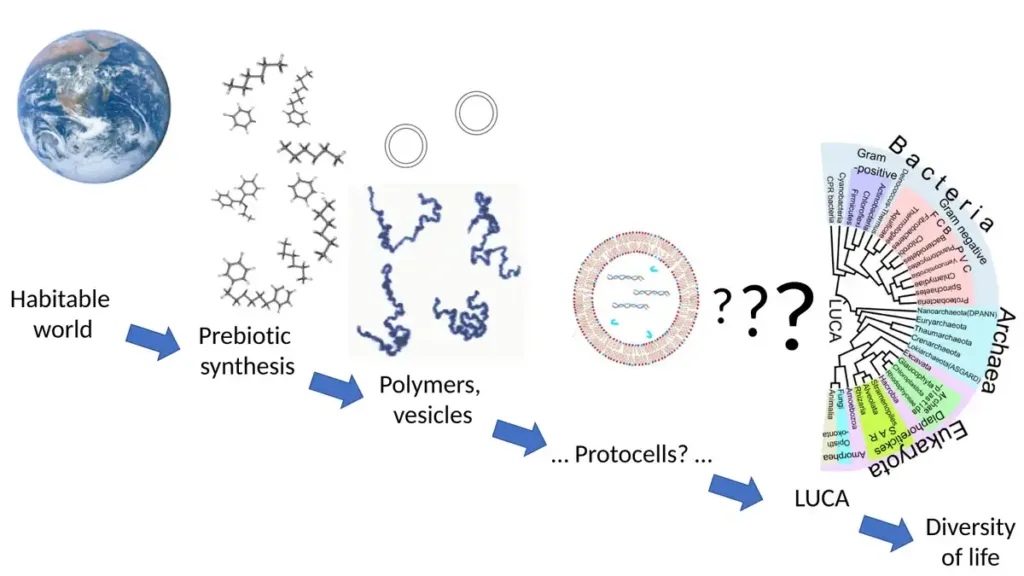How did life begin? It’s one of humanity’s oldest questions, and the answer lies in abiogenesis—the process by which life emerged from non-living matter billions of years ago. Far from magic or myth, abiogenesis is a scientific puzzle, piecing together how simple chemicals in Earth’s primordial conditions transformed into the first living organisms. From electric sparks to cosmic soups, let’s unravel the science behind the origin of life and explore the latest breakthroughs lighting up this ancient mystery.

What Is Abiogenesis?
At its core, abiogenesis is the natural transition from lifeless molecules to self-replicating life. Think of it as the ultimate chemistry experiment: take a mix of water, gases, and minerals, add energy, and—over millions of years—watch life emerge. Unlike biogenesis (life from life), abiogenesis tackles the leap from inanimate to animate. It’s the story of how Earth’s prebiotic chemistry set the stage for everything from bacteria to humans.

The Primordial Soup: Setting the Scene
Picture Earth 4 billion years ago: a steamy, volcanic planet with oceans bubbling under a sky thick with methane, ammonia, and water vapor. This primordial Earth was no paradise, but it was a laboratory. Scientists call it the “primordial soup”—a chaotic brew where the formation of organic molecules began. The question is: what flipped the switch from soup to life?
The Miller-Urey Experiment: A Spark of Insight
In 1952, chemists Stanley Miller and Harold Urey gave us a glimpse. Their famous Miller-Urey experiment simulated early Earth by zapping a flask of water, methane, ammonia, and hydrogen with electric sparks—mimicking lightning. Within days, they found amino acids, the building blocks of proteins. This showed that chemical evolution could start with a jolt of energy, proving that life’s ingredients could form abiotically. It’s a cornerstone of abiogenesis research, but it’s just the beginning.
Microlightning: Tiny Bolts, Big Impact
Fast forward to today, and a new player has entered the scene: microlightning. Recent studies suggest that tiny electric discharges in water droplets—think crashing waves or misty waterfalls—could have sparked prebiotic chemistry on a massive scale. Unlike the dramatic lightning of Miller-Urey, microlightning happens when droplets collide, creating electrical fields up to 8 billion volts per meter. These mini-zaps might have fused simple molecules into amino acids and nucleotides, offering a widespread, natural mechanism for life’s origins. It’s a game-changer, showing that chemical evolution didn’t need rare events—just water and motion.
Other Pathways: Panspermia and Hydrothermal Vents
Abiogenesis isn’t a one-trick pony. Some scientists explore panspermia, the idea that life’s building blocks hitched a ride on comets or meteorites, seeding Earth with organic molecules. Others point to hydrothermal vents—deep-sea hotspots where heat and minerals could have cooked up life’s precursors. These vents, rich in hydrogen and carbon dioxide, might have been cradles for early metabolism. Each theory adds a layer to the origin of life, suggesting multiple paths converged in Earth’s chaotic youth.
From Molecules to Life: The Big Leap
Making organic molecules is one thing; turning them into self-replicating systems is another. Scientists believe this jump involved RNA, a molecule that can store information (like DNA) and catalyze reactions (like proteins). The “RNA World” hypothesis posits that RNA was the first spark of life, forming in the primordial soup and eventually leading to cells. Whether fueled by microlightning, vents, or cosmic delivery, this step marks the dawn of chemical evolution into biological evolution.
Why It Matters Today
Understanding abiogenesis isn’t just about the past—it’s about the future. It informs the search for life on Mars, Europa, or exoplanets, where similar processes might unfold. It also inspires synthetic biology, where researchers aim to recreate life in labs. The discovery of microlightning, for instance, hints at how universal life’s origins might be—anywhere with water and energy could be a candidate.
The Mystery Endures
The science of abiogenesis is a work in progress. We’ve got the ingredients (organic molecules), the energy (lightning, microlightning, heat), and the settings (primordial Earth conditions). But the recipe? That’s still elusive. Each breakthrough—like microlightning in water droplets—brings us closer, yet the origin of life remains a tantalizing enigma. It’s a reminder of how small sparks, whether in a lab or a wave, can ignite the biggest questions.
Microlightning: How Tiny Lightning Bolts in Water Droplets Could Have Sparked Life on Earth

1 thought on “The Science of Abiogenesis Explained”